The mission statement “Productive urban district” for the state capital of Munich aims to enable a long-term sustainable transformation of functionally separated industrial areas into hybrid urban districts with multiple overlaps of use. Together with various departments of the state, capital and an interdisciplinary team of open space, mobility planners and architects, a target image was developed, which is now being applied in a wide range of inner-city commercial areas.
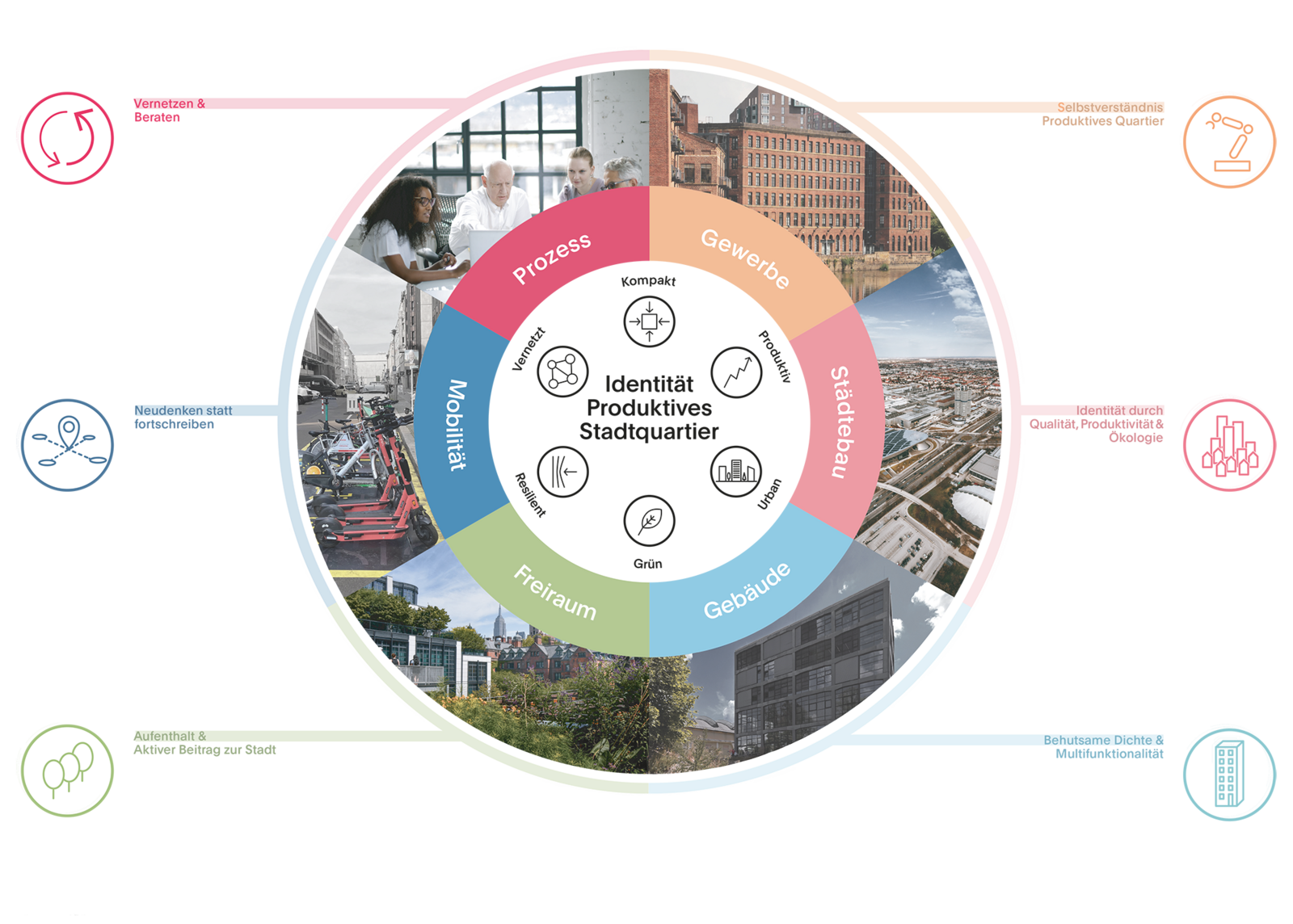
Under the premise of the interior development, the commercial area is to be strongly compacted and, at the same time, existing compatible businesses are to be kept on site. The strong compaction goes hand in hand with a reorganization of soil-bound areas and at the same time promotes unsealing to increase climate resilience and residence value.
Public and private partnerships are activated to enable a collectible transformation at different speeds and to make optimal use of vacancies.
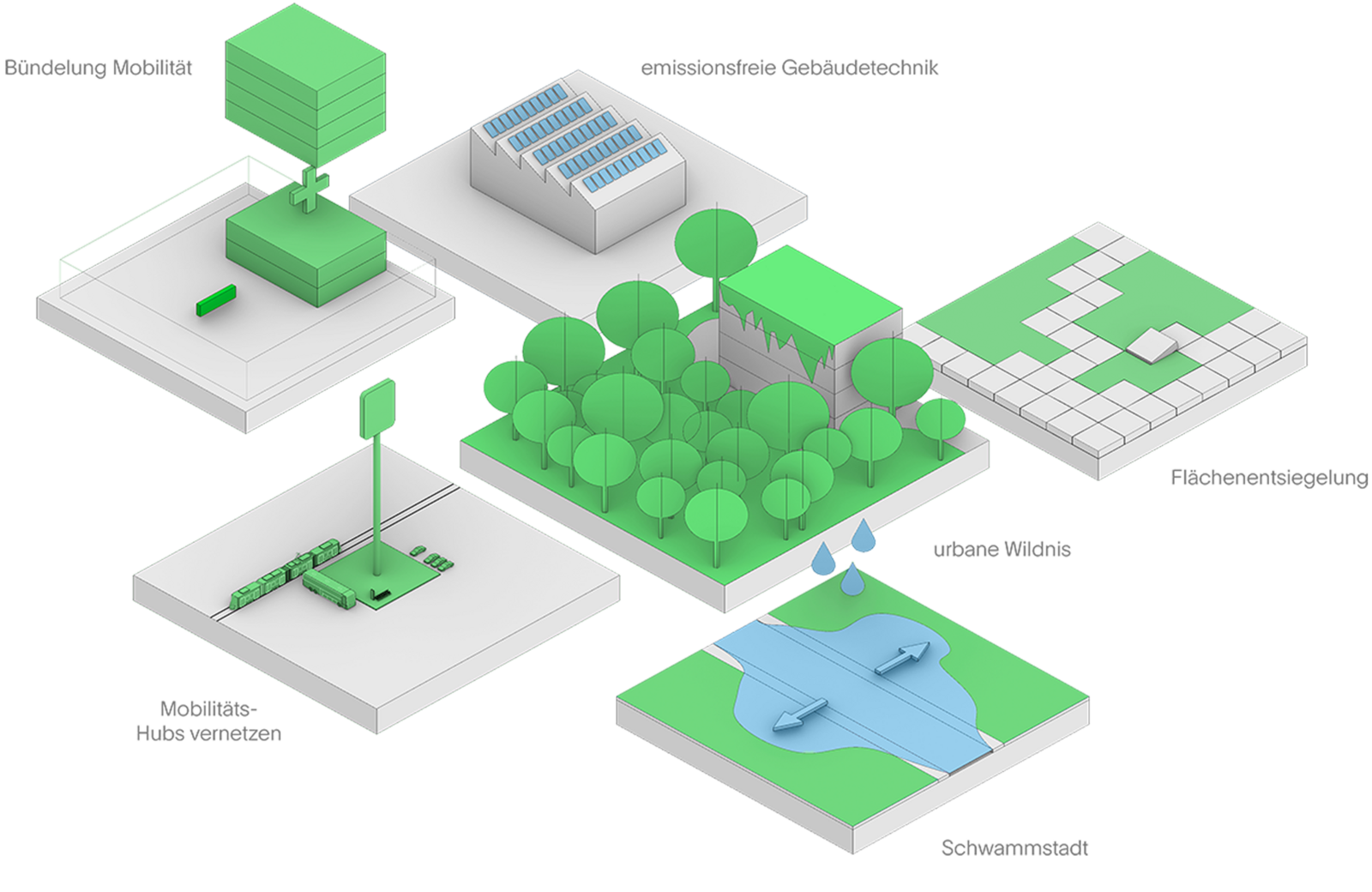
Climate resilience
Inner-city commercial areas are particularly tightly sealed. If green exists, it is usually on residual areas. The productive urban district puts free space at the center of development. The promotion of climate resilience, biodiversity, the improvement of the quality of living and lastly, the identity of the district is to be developed through the open space as a community space.
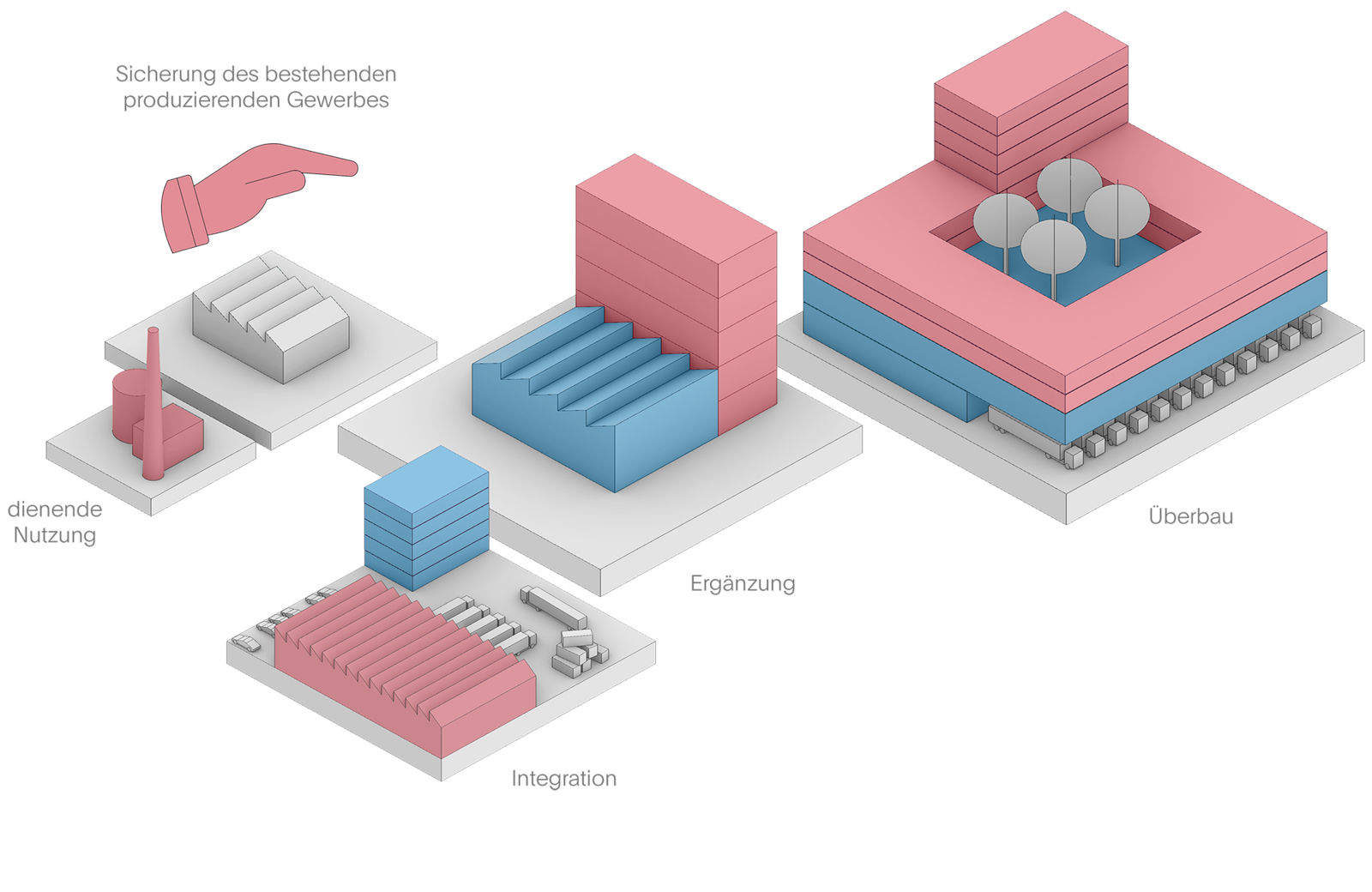
Strengthening A-Industry
The productive is in the name. The productive urban district wants to dissolve the functionally separated city and promote more mixing. But this also means resolutely protecting the low-emission productive industry in the city and bringing it together with the demands of urban living. Care must also be taken to ensure that the manufacturing sector is not replaced by the office sector.
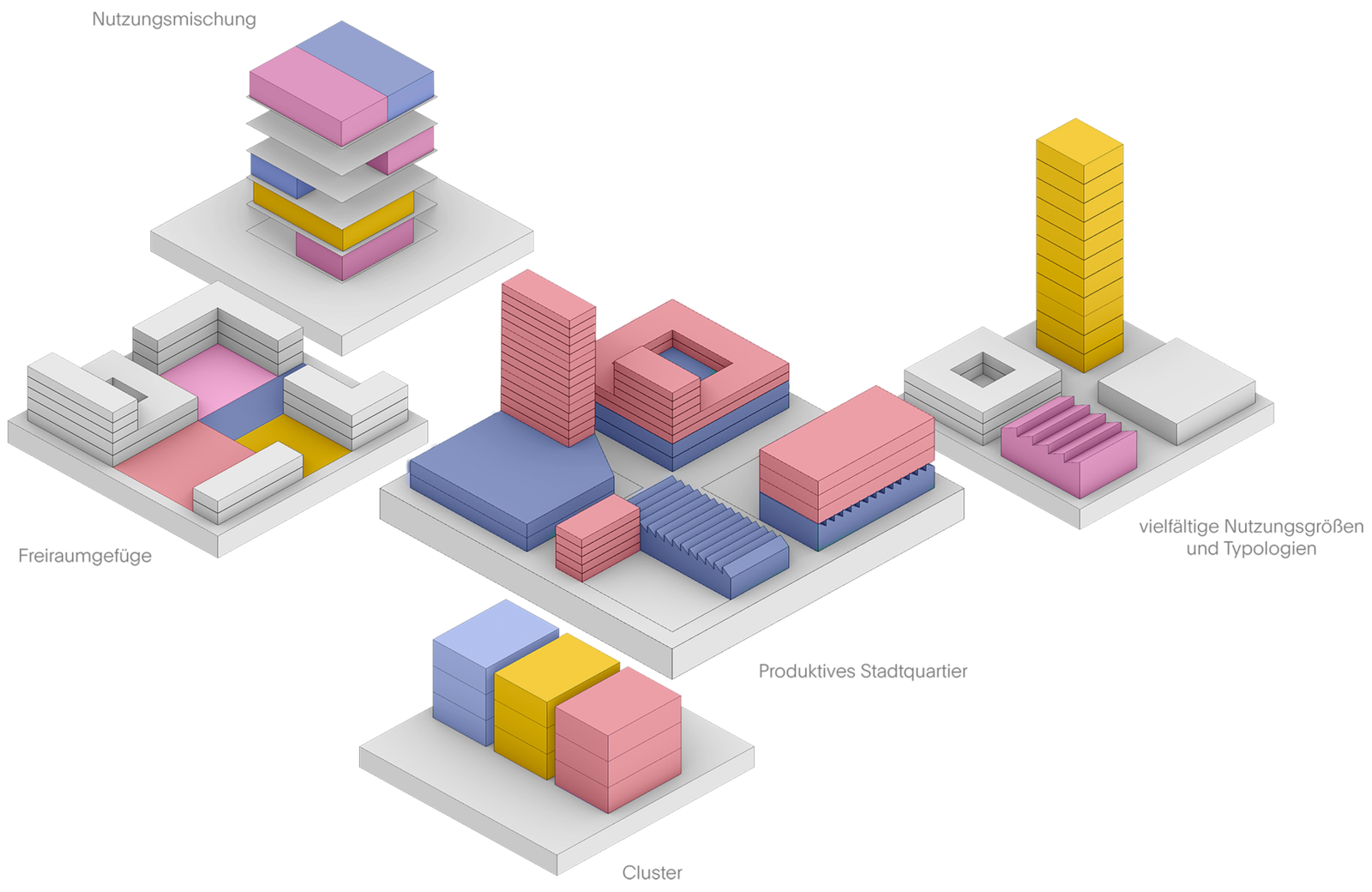
Variety of Uses
The Productive urban district dissolves the functionally separated city of the 50s and 60s. A hybrid urban building block is to be created, the uses of which complement each other. The diversity creates synergies that are also reflected in the development process. As planners, we support stakeholders in networking. The productive urban district is the result of the collaboration of private and public stakeholders.
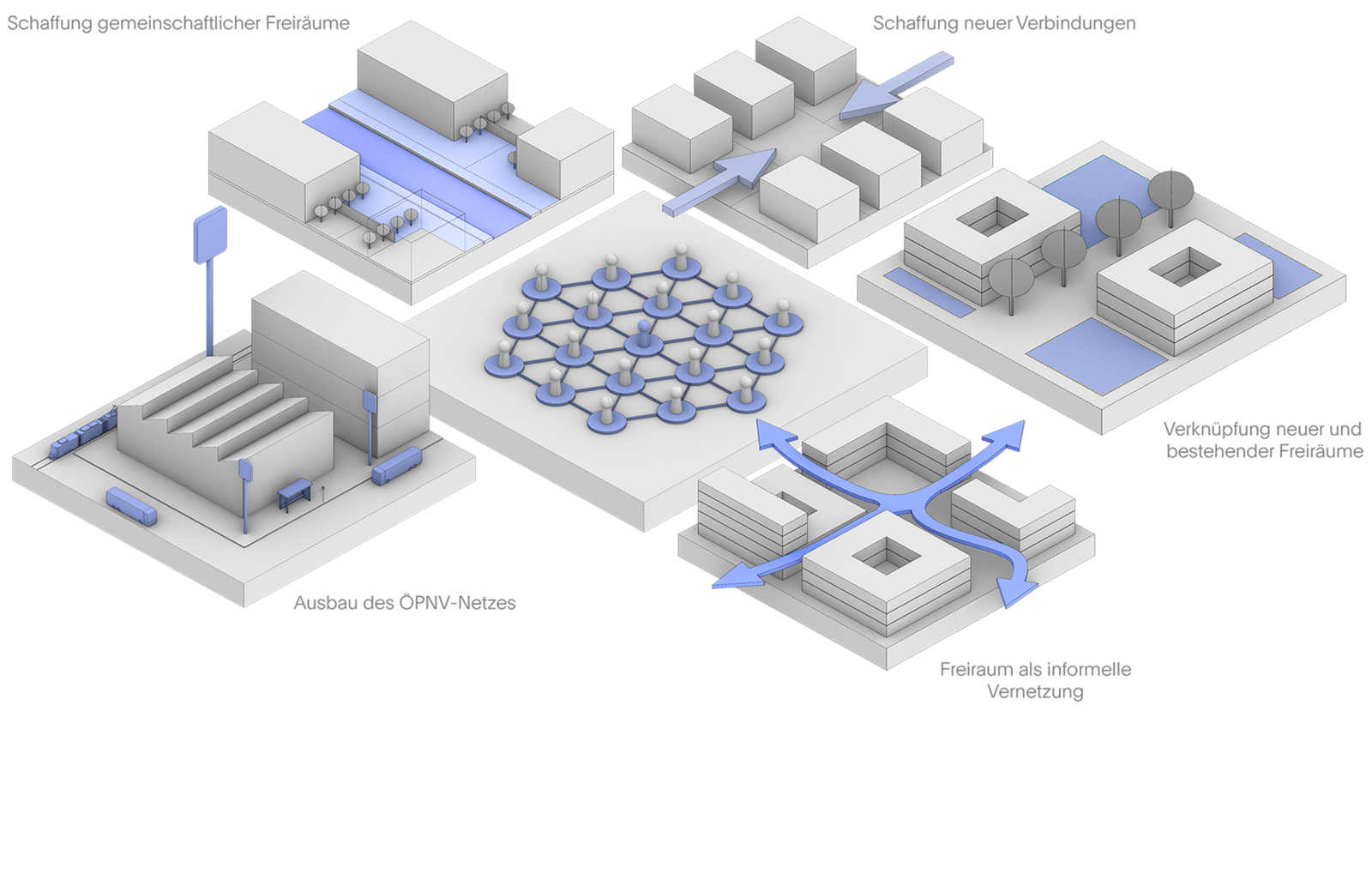
Networking
Mobility is the key to downtown development. Often an obstacle because infrastructures are overloaded, mobility and infrastructure need to be complemented and expanded creatively and with new approaches. Then in particular the MIV (motorized individual transport) is often too inefficient to carry the neighbourhood into the future. The aim of this package of measures is to better connect the area as a whole.
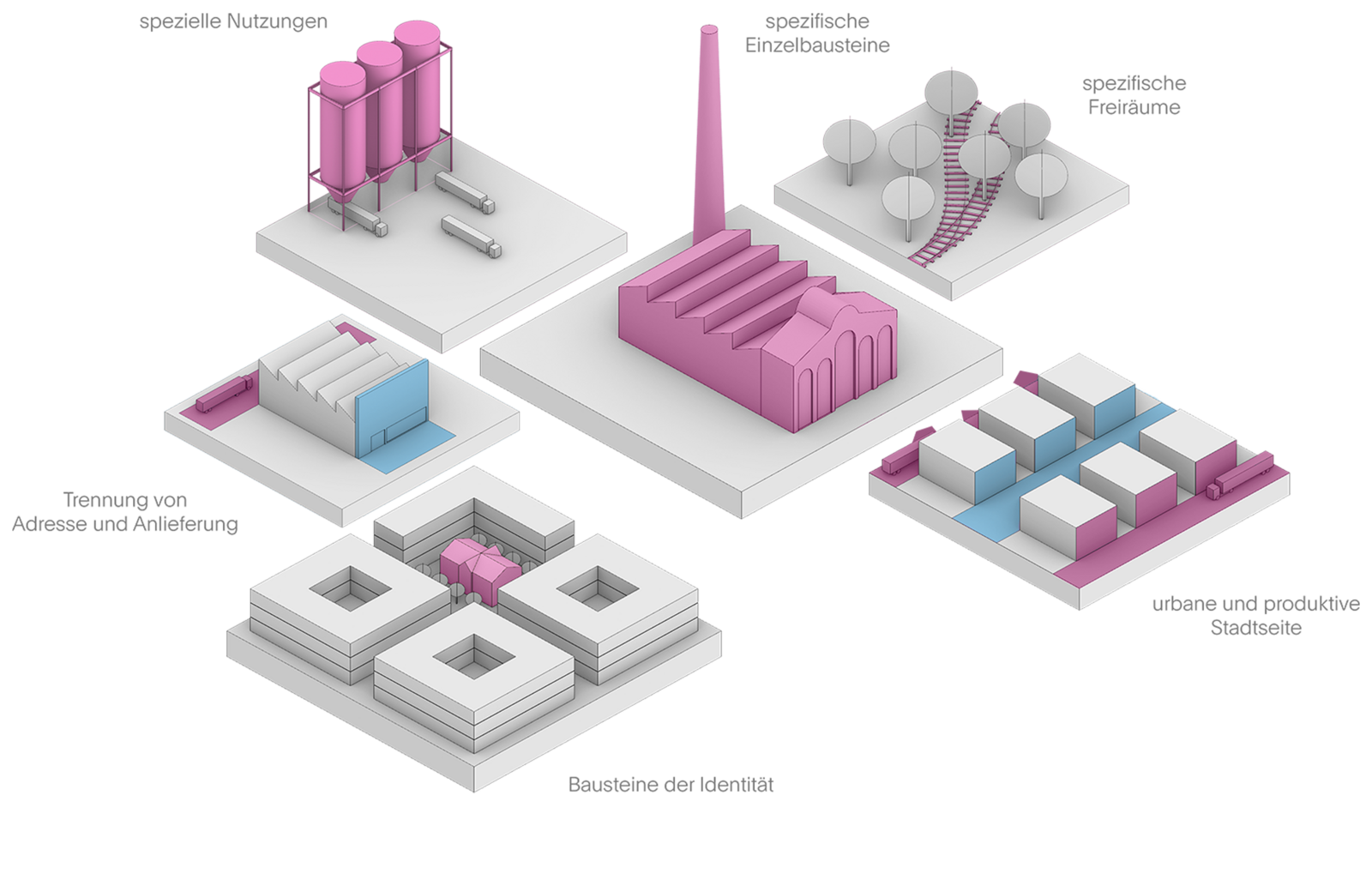
Identity
The vision picture is only halfway there. Owners as well as the city society and, actually, all parts of the city must be taken along and inspired. The specific identity of the areas has to be found and placed at the center – old tracks, historical buildings, industrially influenced pictures – this makes the productive urban district a magnet for a wide variety.
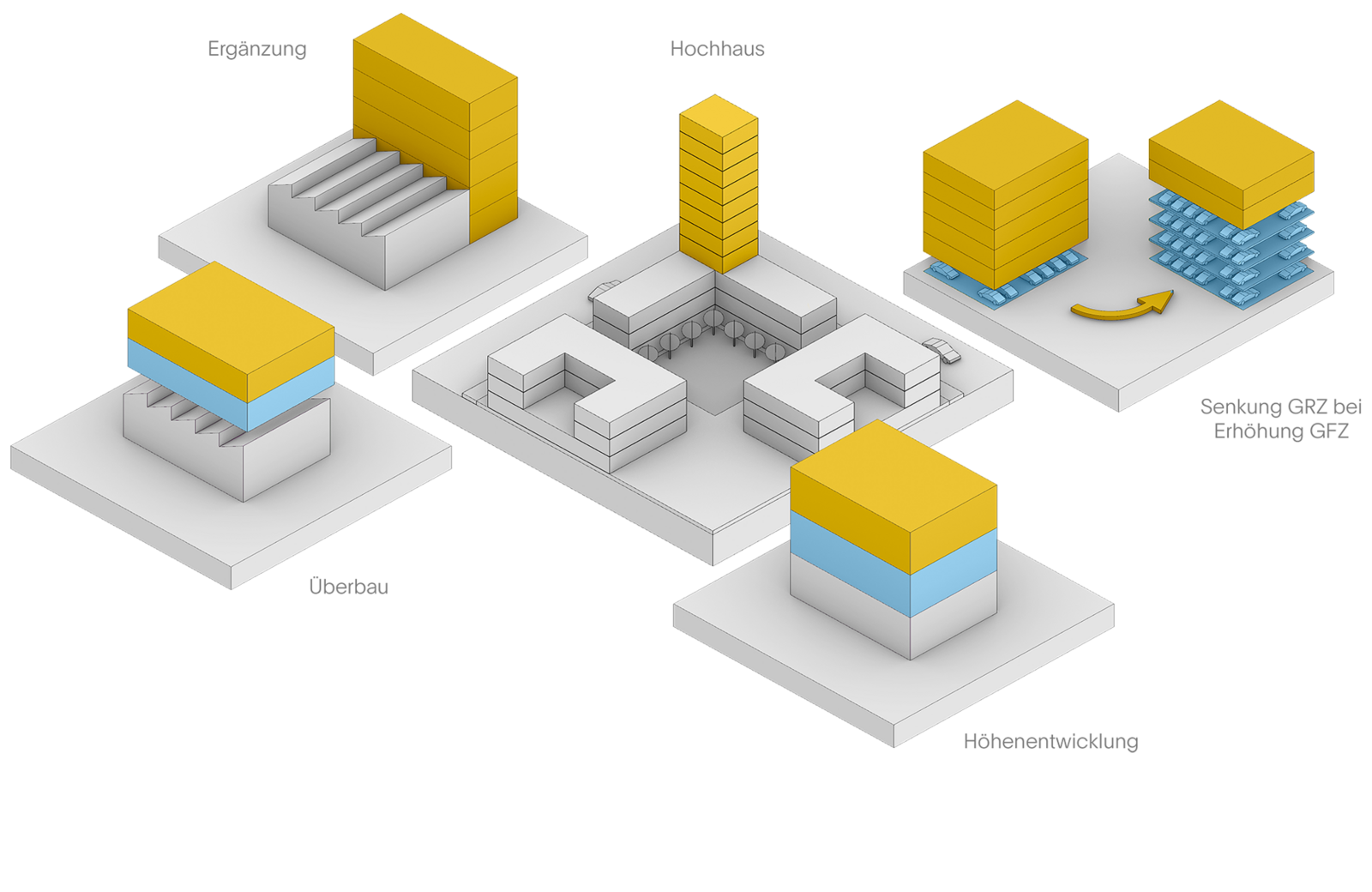
Consulting & Project Development:
Specialist planners:
Studio Vulkan (Landscape Design)
Urban Standards (Mobility planner)